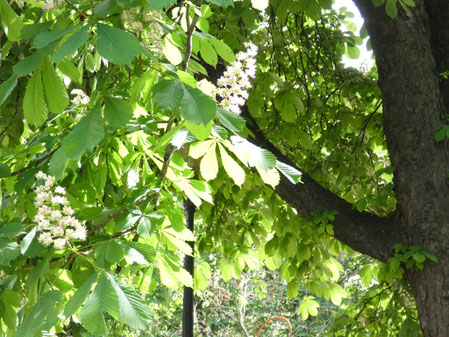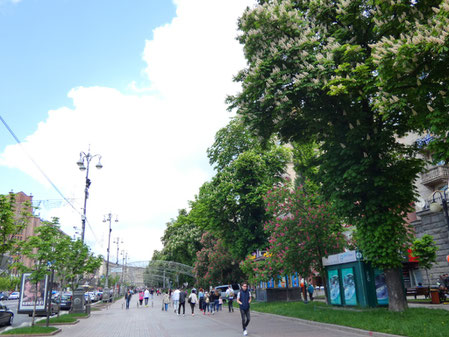One of the symbols of the Ukrainian capital is chestnut. Kyiv chestnuts were depicted on the facades of houses, and product labels. Also, there are lots of songs about chestnuts. It’s still placed on the Kyiv cake box. No doubt, Kyivans adore these trees.
The famous researcher of Kyiv, Maxym Berlinsky, noted that in Podil, Kyiv’s old district, among the walnut, apricot and other fruit trees a beautiful ornamental tree - horse chestnut, which bloomed with pyramidal white-pink flowers, had appeared. This tree could come to Kyiv from Hungary. In autumn, it bears fruit, which, unlike the fruits of chestnut ordinary, which was imported to Western Europe from Italy, is inedible.
In the 1820s of the 19th century in Podil, among the trees planted on the streets, beautiful chestnut trees with white and pink flowers first appeared. Later, these trees became popular on the sites of city estates.
There is one more interesting version which says that in 1842, Emperor Nicholas I ordered to uproot planted chestnuts and replace them with poplars on Bibikovsky Boulevard (the current Taras Shevchenko Boulevard). The order was executed, but Kyivans picked up saplings and planted chestnuts on the territories of their estates.
In the second half of the nineteenth century, the green spaces of the capital were officially regulated. The documents indicated in which part of the city which trees could be planted. The part of the city, which covered the area from the even side of Khreshchatyk to Kudryavets, as well as Nikolaevsky Square (the current park named after Taras Shevchenko), was allotted to chestnuts. In Khreshchatyk street chestnut alleys appeared after the Second World War.


